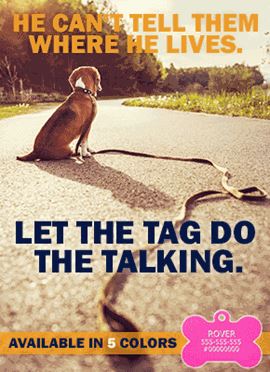
Summer Safety 101
The sun is out, the heat is up, and there isn’t a cloud in sight. But if you’re a dog owner, there are some special precautions you’ll need to take in order to keep your four-legged buddy safe when the temperatures rise. These five summer safety tips should put your mind at ease, giving you and your precious pet the a chance to fully enjoy the summer fun you both deserve.
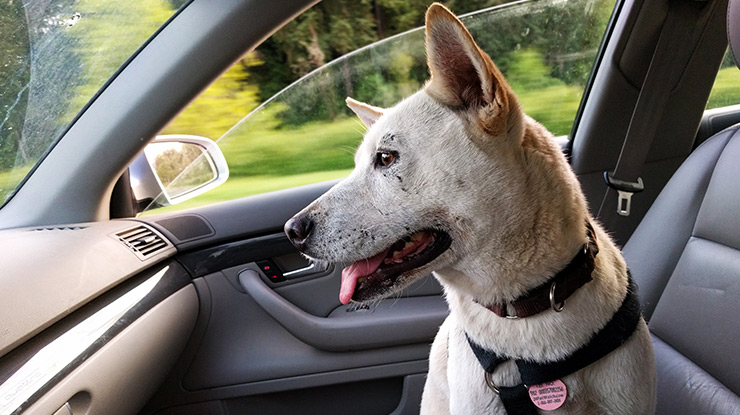
1. Do Not Leave Your Pet Unattended in Your Car
You may think you’re only stepping out for a few minutes, but a few minutes are all it takes for the temperature to drastically change in your car. While temperatures will vary depending on the climate of your location, it’s best to eliminate risk by not leaving your dog unattended in a car at all.
Studies have shown that temperatures can rise as much as 20°F within 10 minutes inside a parked car that doesn’t have its air conditioner running, and a study published in the Journal of the Louisiana State Medical Society showed that a parked car with partially opened windows could reach temperatures exceeding 125°F within only 20 minutes and 140°F in 40 minutes during a partially cloudy summer day in the state.
And it’s not enough to simply leave the motor running with the AC turned on. For instance, a police K-9 died two summers ago in Wisconsin after being left unattended in a police vehicle when the air conditioner malfunctioned and shut off with no one around to let the dog out.
So, if you truly want to keep your dog safe from the heat, leave nothing to chance. Never leave your dog in a car unattended.
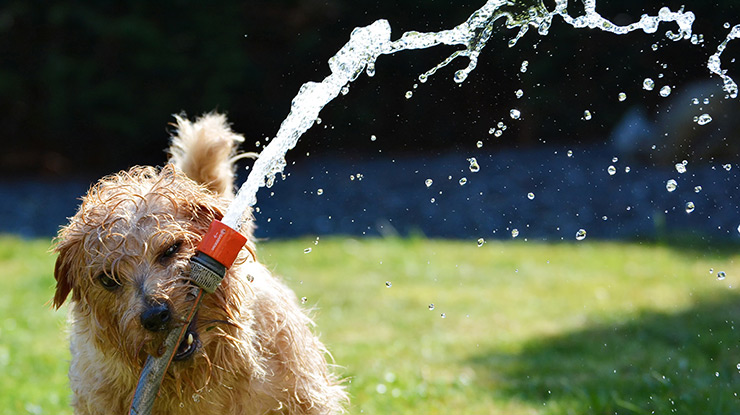
2. Hydration
Naturally, when the weather gets hot, our bodies perspire to cool us down, and dogs are no different (well, actually, they are a little different since they sweat through their paw pads and reduce body heat through panting—but it’s still the same idea, so let’s go with it).
If fluids are being released by the body to cool it down, the body is going to require more fluids to replace them. As a responsible pet owner, it’s up to you to make sure your dog always has access to cool, clean water.
So, if your dog will be spending some time outside, keep an eye on the water dish to guard against dehydration. You can also buy freezable dishes to keep the water cool longer, as well as portable, fold-up water bowls for times when you’re with your dog on the go.
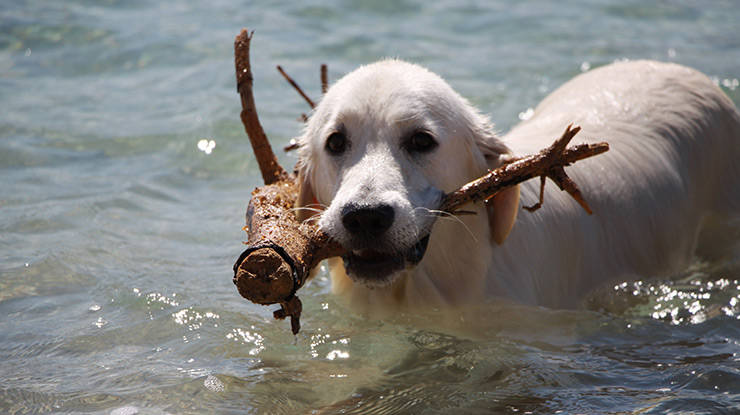
3. Swimming
There’s nothing better than beating the heat with a nice dip in the pool on a hot summer day, but an accessible, open pool can bring its own dangers for curious dogs.
For one thing, some breeds just aren’t very good at swimming. Whether it’s the stumpy-legged corgi or the lanky-limbed boxer, some breeds just aren’t natural swimmers. Of course, these dogs can still enjoy some playtime in the pool, but they will greatly benefit from lifejackets and buoyant vests designed for canines.
And if you truly want to ensure the safety of your dog, you should keep the pool inaccessible to your furry pal unless a responsible adult is around to supervise.
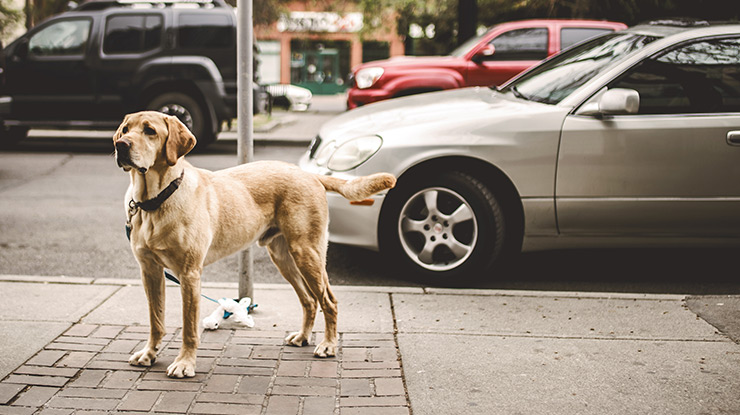
4. Hot Surfaces
The more time a dog spends outdoors, the more likely that dog is to develop callouses on his or her paws—but this isn’t a bad thing!
The callouses that develop on a dog’s paws allow the dog to walk on hard and rough surfaces that would likely damage the soft, sensitive paws of indoor dogs and puppies. However, just because a dog’s paws are tough, it doesn’t mean they’re invulnerable.
When the weather is especially hot, surfaces like concrete and sand can retain the sun’s heat and can do some real harm to the paws of dogs, resulting in pain, cracking, bleeding, and blistering.
Therefore, responsible pet owners should either keep their dogs indoors and off of hot surfaces on sweltering summer days, or they should buy protective footwear to keep a healthy amount of space between their dogs’ feet and outdoor surfaces.

5. Sunscreen
It may be hard to believe, but dogs can get sunburns just like humans—and, unfortunately, just like humans, those sunburns can lead to skin cancer over time.
Dogs usually sunburn on the ear rims, nose bridge, eyelids, mouth, stomach (especially short dogs that carry their bellies close to the ground), and any exposed skin or patches of thinning fur. Burn symptoms include red or unnaturally pink areas, dry or cracked skin, skin that’s hot to the touch, and tender skin.
Fortunately, the problem can be addressed in much the same way humans prevent sunburn. You can apply sunscreen to areas that are prone to burning (just be sure to reapply if you will be spending a long time outdoors). Also, if you can cover your dog in some breathable summer clothes (ideally light in color to reflect the heat), they should provide an extra layer of protection from the sun’s rays.
Do you have any summer safety tips we may have missed? If so, tell us in the comments!
Check out our Talkin' Dogs video on Summer Safety Tips here.










